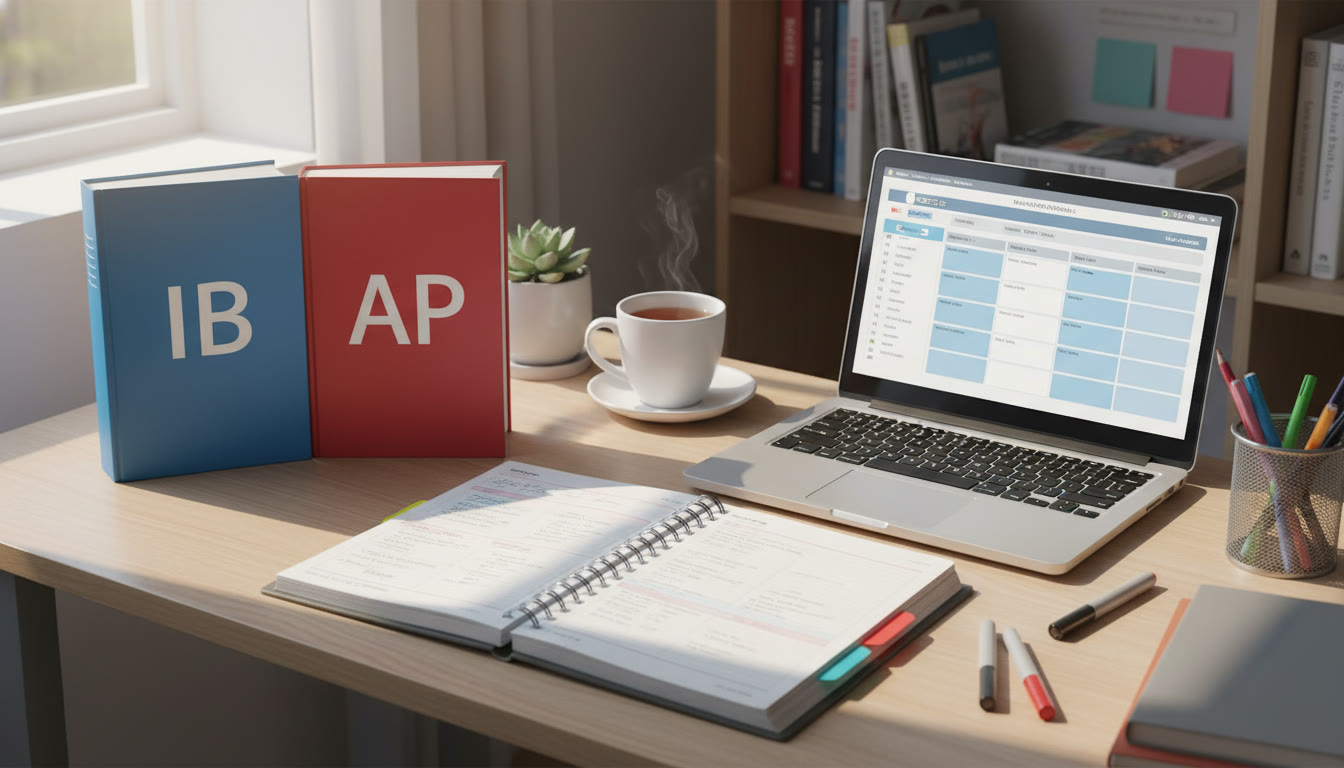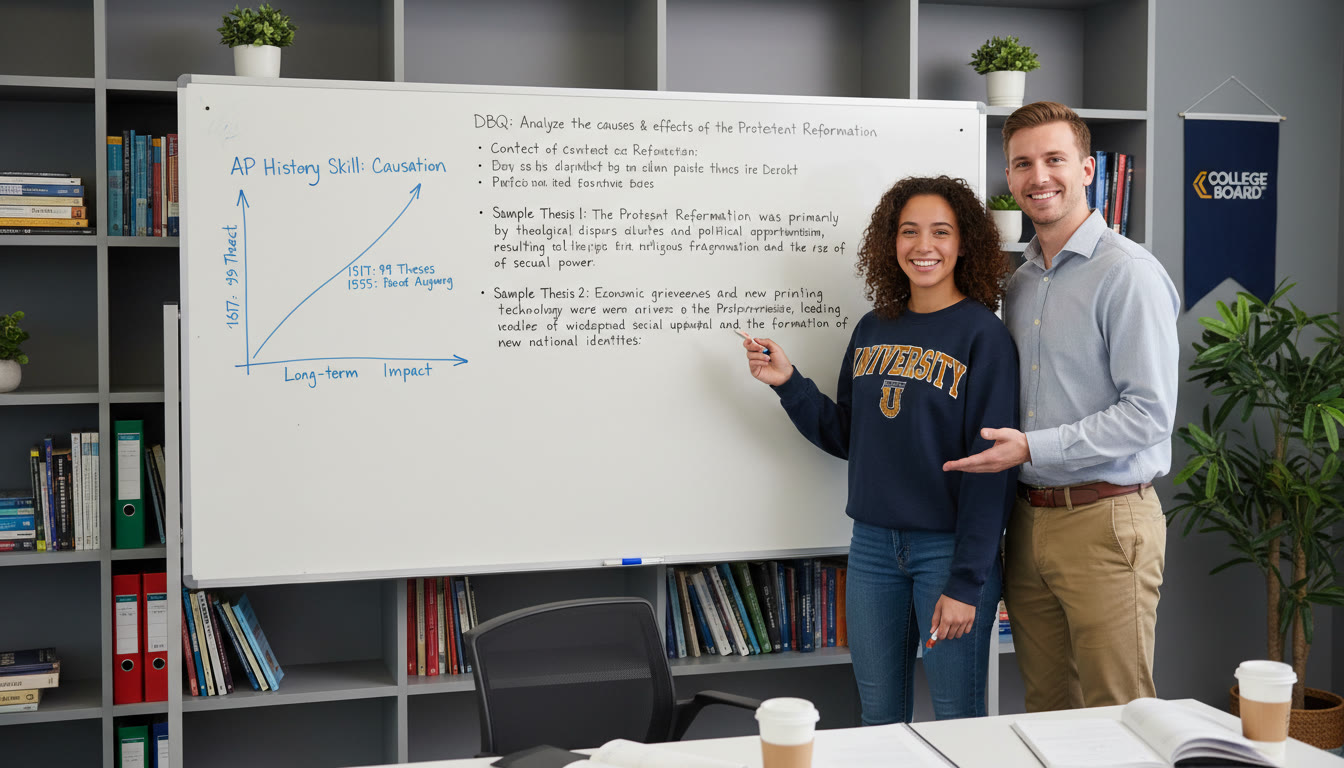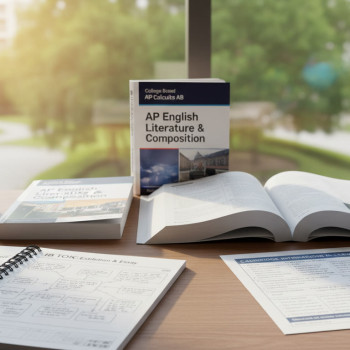Why This Guide Exists: Making Two Systems Work for You
Whether you’re an International Baccalaureate (IB) student thinking about taking AP exams, an AP student curious about IB-style skills, or a parent trying to help your child plan a rigorous pathway, this guide is for you. IB and AP both open college doors, but they emphasize different skills and assessment styles. The good news: the core abilities—critical thinking, evidence-based writing, and analytical reading—overlap substantially. With a few targeted shifts in approach and practice, you can translate what you already know in IB History, Geography, or Economics into success on AP World, AP US, AP European History and AP Macro/Microeconomics.

Big Picture: What’s Similar, What’s Different
Similarities
- Core Skills: Both programs reward contextual understanding, the ability to analyze primary and secondary sources, and clear, persuasive writing.
- Academic Rigor: Both demand content mastery plus higher-order thinking—synthesis and evaluation, not just memorization.
- College Credit Potential: Strong AP scores and IB Higher Level results can both translate into college credit or advanced placement.
Differences to Watch
- Assessment Style: IB often emphasizes longer, internally assessed papers or projects (e.g., Internal Assessments) and a holistic rubric, while AP is exam-focused with a mix of multiple-choice and timed free-response questions.
- Scope and Depth: AP courses are structured around specific content outlines tied to a single, high-stakes exam. IB’s curriculum can be broader and theme-driven, with more emphasis on cross-regional links and global perspectives.
- Writing Expectations: AP free-response questions often ask for focused thesis-driven essays under time constraints; IB essays may allow greater scope but expect depth, comparative insight, and a reflective stance.
Translating IB Skills Into AP Success: A Skill-by-Skill Roadmap
1. From IB Source Analysis to AP Document-Based Questions (DBQs)
IB students are usually comfortable with primary source analysis—identifying bias, perspective, provenance, and usefulness. AP exams reward those skills but package them differently in DBQs. DBQs require you to use a set of provided documents to support a tightly argued thesis within 60–90 minutes.
- Practice Paring: Teach yourself to write shorter, sharper introductions and to weave documents into analysis, not just summarize them.
- Thesis First: Begin by crafting a one-sentence thesis that answers every part of the prompt—this is essential on AP.
- Document Use: State the author/perspective and explicitly link each document to your claim. IB’s deeper provenance practice will be an advantage here—just be mindful of time.
2. Transferring IB Essay Skills to AP Long Essay Questions (LEQs)
IB’s extended essays and Paper 2 practice hone long-form argumentation, which maps well onto AP LEQs. The main adaptation? Timing and structure. AP LEQs are shorter and more targeted: one clear thesis, two to three evidence-based body paragraphs, and a concise conclusion.
- Structure Drill: Practice a three-paragraph body structure: (1) topic sentence + evidence, (2) comparison/contrast or counterargument, (3) synthesis and significance.
- Time Blocks: Simulate the exam by writing full LEQs in 35–45 minutes to build pacing and clarity.
3. Geography and Regional Thinking Across Both Systems
IB Geography often trains students to think spatially—understanding human-environment interactions and scale. AP World and Regional History exams benefit from that spatial literacy when you describe patterns, causation, and consequences across regions.
- Maps as Evidence: Use maps to support claims about trade, migration, or environmental impact. AP scorers reward concrete examples tied to geography.
- Scale Shifts: Practice moving from local case studies (a city, a region) to broader impacts (global trade networks, imperial policies) quickly and cleanly.
4. Economics: From IB To AP Macro and Micro
IB Economics emphasizes economic theory, international perspectives, and policy evaluation—foundations that directly transfer to AP Microeconomics and Macroeconomics. The primary shift is exam style: AP focuses on concise problem-solving and graph-based analysis under time limits.
- Graph Fluency: Make sure you can draw and interpret supply/demand curves, fiscal/monetary policy diagrams, and AS/AD models quickly and accurately.
- Terminology Precision: AP exams penalize vague language. Replace phrases like “prices go up” with precise language such as “equilibrium price increases due to a leftward shift of supply.”
- Free-Response Practice: Work short, direct responses that integrate calculations with economic reasoning. IB-style policy essays will make the evaluative part easier—AP often rewards crisp, focused claims and supporting calculations.
Study Routine: Build The Bridge With a Practical Schedule
Below is a sample eight-week plan for an IB student preparing for an upcoming AP exam, adaptable whether you’re focusing on history or economics. The idea: leverage your IB strengths while deliberately training for AP format and timing.
| Week | Primary Focus | Activities | Target Outcome |
|---|---|---|---|
| 1 | Content review | Outline syllabus topics; 4–5 content review sessions; flashcards for key terms | Clear map of strengths/gaps |
| 2 | DBQ / Source skills | 2 timed DBQs; 3 in-depth document analyses | Faster thesis and evidence use |
| 3 | LEQs / Essay structure | 3 timed LEQs; peer review | Concise, structured essays |
| 4 | Practice Test 1 | Full-length exam under timed conditions | Baseline score and pacing insight |
| 5 | Error analysis & weak areas | Targeted lessons on weak areas; mini-concepts drills | Improved reliability |
| 6 | Economics graphs / Data | Graph drills; practice FRQs with calculations | Graph fluency |
| 7 | Practice Test 2 | Full-length exam; timed essays | Near-exam readiness |
| 8 | Polish & Rest | Light review; sleep, nutrition, logistics for exam day | Peak performance |
Study Tools That Actually Work
Active Methods Over Passive Reading
Passive reading feels productive but is rarely effective under test conditions. Replace hours of passive review with active methods:
- Practice DBQs and LEQs under timed conditions.
- Teach a classmate a topic—explaining complex ideas strengthens retention.
- Use flashcards for quick recall of dates, definitions, and models—but pair them with timed application questions.
Use Comparative Timelines and Crosswalks
Create a “crosswalk” document that lists IB skills and maps them to AP tasks. For example, match IB source evaluation notes to AP DBQ strategies or pair IB internal assessment topics with potential AP LEQ prompts. This turns existing study into AP-ready practice rather than starting from zero.
Sample Mini-Lessons: Concrete Examples
From an IB HL History Paper to an AP DBQ
IB prompt: “Evaluate the causes of the French Revolution with reference to social, economic, and political factors.” You might have written a long, balanced essay. To convert that skill for an AP DBQ about the French Revolution:
- Craft a one-sentence thesis directly answering the DBQ’s prompt.
- Choose three documents that support distinct parts of your thesis (e.g., financial crisis, Enlightenment ideas, peasant unrest).
- Keep paragraphs focused: Document claim + explanation + link to thesis.
From an IB Economics Internal Assessment to an AP FRQ
IB IA likely asked for policy evaluation with multiple data sources—great training. For AP, streamline: identify the economic model (AS/AD or supply and demand), draw the correct graph, compute any slopes or elasticity if required, and write a short policy evaluation with one or two succinct pros/cons.
How Tutoring Fits in: When to Get Help (and What to Expect)
At some point, targeted support accelerates progress. Personalized tutoring—such as Sparkl’s 1-on-1 guidance—can help you refine essay structure, build a tailored study plan, and offer focused practice on your weakest skills. A few ways tutoring helps:
- Tailored Study Plans: Tutors can map your IB strengths to AP requirements and prioritize practice topics for maximum score improvement.
- Expert Feedback: Getting real-time corrections on DBQs or graphs shortens the feedback loop and builds exam-specific habits.
- AI-Driven Insights: Some services combine expert tutors with analytics to track progress and suggest next steps—this can be especially useful in the final weeks before an exam.
Common Pitfalls and How to Avoid Them
- Overgeneralizing Evidence: Don’t rely on vague claims. Use specific examples and link them to the prompt.
- Poor Time Management: Practice timed sections. If you run out of time on essays, your knowledge won’t translate into score.
- Underusing Graphs (Economics): A neat graph with correct labels and shifts can earn clear points—practice drawing them cleanly by hand.
- Ignoring Rubric Language: Learn AP rubric terms like “thesis/claim,” “contextualization,” “evidence,” and “reasoning.” Your IB vocabulary often matches—but know the AP phrasing.
Putting It Into Practice: A Two-Week Sprint Checklist
As the exam approaches, focus on high-impact practices. This checklist condenses a last-minute plan into daily actions.
- Day 1–2: Full diagnostic exam to target weak areas.
- Day 3–5: Intensive DBQ/LEQ practice with immediate tutor or peer feedback.
- Day 6–8: Focus on problem areas—graphs for economics, comparative essays for history.
- Day 9–11: Light full-length practice and pacing drills.
- Day 12–14: Rest, logistics check, and short review of high-yield concepts only.
Sample Rubric Translation Table: IB Skill → AP Task
| IB Skill | What It Looks Like | AP Counterpart | How to Adapt |
|---|---|---|---|
| Source Provenance Analysis | Discuss author background, purpose, audience | DBQ Document Contextualization | Be concise—one sentence tying provenance to usefulness for your thesis |
| Comparative Essays | Multi-regional comparisons and synthesis | LEQ Comparative Prompts | Use parallel structure and explicit compare/contrast topic sentences |
| Policy Evaluation (IB Economics) | Pros/cons of real-world policies | AP FRQ: Policy Impact & Analysis | Pair models/graphs with brief evaluation and conclusion |
Exam Day Tips (Keep These Simple and Practical)
- Bring sharpened pencils, an eraser, and a watch (unless prohibited). Practice without digital crutches during prep to simulate the real thing.
- Start essays with a 2–3 minute plan: thesis, evidence bullets, order of paragraphs. That small investment saves time and creates structure.
- If you get stuck on an MCQ, skip and return—don’t let one question steal precious minutes.
- For economic graphs, draw neatly and label everything: axes, curves, shifts, and equilibrium points.
A Final Word: Adaptability Is Your Greatest Asset
IB students often bring thoughtful analysis, comparative breadth, and strong writing—excellent tools for AP success. The main job is conversion: practicing concise, timed responses, ensuring graph and calculation fluency for economics, and mastering AP rubric language. If you pair your IB strengths with targeted AP practice—intense DBQ/LEQ drills, graph work for Macro/Micro, and mocked exams—you’ll bridge the two systems smoothly.
For many students, a little help speeds that process. Personalized tutoring, whether it’s a few sessions to refine DBQs or an ongoing plan to track progress, can be a game-changer. Services like Sparkl offer 1-on-1 guidance, tailored study plans, expert tutors, and data-driven insights that fit naturally into a focused prep schedule—especially when you’re converting IB skill sets to AP formats.

Resources for Continued Practice (How to Build Your Own AP-Ready Toolkit)
Create a small, repeatable toolkit that you use throughout preparation:
- Timetabled practice tests (monthly, then weekly in final month)
- One “error log” notebook where you correct every mistake and summarize the lesson learned
- Short, focused essay templates for DBQ and LEQ with blank slots you can fill during practice
- Graph templates for economics—practice until you can draw them in 1–2 minutes
Closing Encouragement
Switching fluently between IB and AP is less about reinventing yourself and more about translating strengths into the language of a different exam. Use what you already do well—analysis, evaluation, and critical writing—and add targeted speed drills and format-specific practice. With steady work, smart feedback, and a plan tuned to your needs, you’ll not only perform well on test day—you’ll become a stronger, more adaptable scholar in the process.
Good luck—and remember: preparation is a series of small, deliberate choices. Keep your goals visible, practice with purpose, and get help when you need it. You’ve already developed powerful intellectual habits in IB—now give them the AP-ready polish they deserve.
























No Comments
Leave a comment Cancel